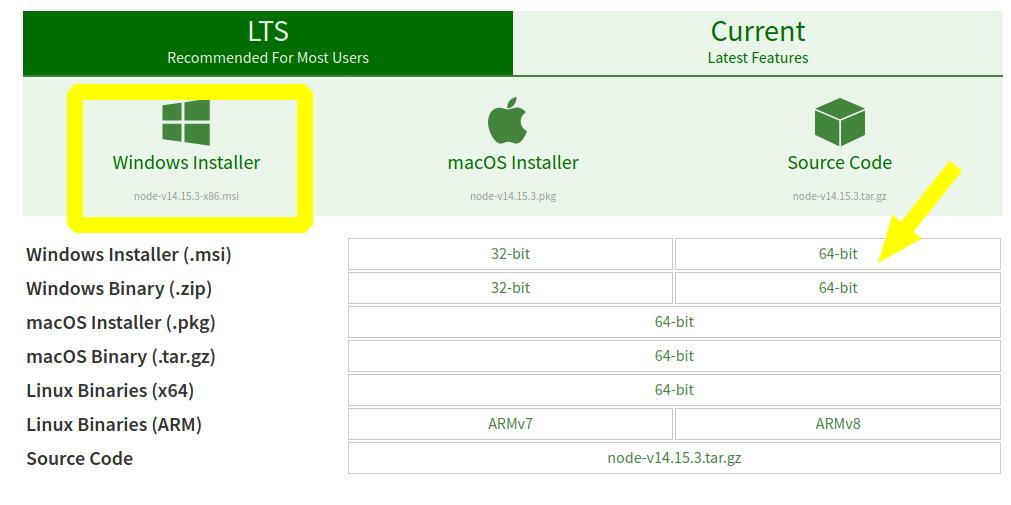

- #Downgrade node js windows full
- #Downgrade node js windows series
- #Downgrade node js windows windows
#Downgrade node js windows full
The iisnode module allows creation of multiple node.exe processes per application and load balances the HTTP traffic between them, therefore enabling full utilization of a server’s CPU capacity without requiring additional infrastructure code from an application developer. Since node.exe is a single threaded process, it only scales to one CPU core. You don’t have to implement infrastructure to start, stop, and monitor the processes. The iisnode module takes care of lifetime management of node.exe processes making it simple to improve overall reliability. Some of the advantages of hosting node.js applications in IIS using the iisnode module as opposed to self-hosting node.exe processes include:
#Downgrade node js windows windows
The project utilizes the Windows build of node.exe. The iisnode project provides a native IIS 7/8 module that allows hosting of node.js applications in IIS 7/8 and IIS 7/8 Express (WebMatrix). Have a look at the previous post on Node.js development in our blog: “Getting started with Node.js in WebStorm”.In this post I am discussing hosting node.js appplications in IIS on Windows using the iisnode project. Please note that for remote debug your app should be running with -debug= or -debug-brk= parameter. You’ll be able to use full-featured debugger in the same way as if you were debugging your code locally. You’ll see the Debug tool window when the breakpoint is reached. Now that the debug configuration is ready, select it from the drop-down list of configurations on the right and click Debug. Select Remote Node.js Debug type when creating a new debug configuration, then specify the host you need to connect to and the port. You’ll be able to restart the debug session without restarting the app itself. With Remote Node.js Debug configuration you can debug Node.js apps that are running remotely. A tool window with variables view, frames and watchers for your debug session will appear: ( Shift+F9 on Windows or Linux, Ctrl+D on Mac). The built-in Node.js debugger allows you to step through the breakpoints, change values on the fly, evaluate expressions, and set watches.Ĭlick the Debug button for the created Run/Debug configuration in the top right-hand corner of the IDE, from the Run menu or with the shortcut The same configuration can be used to debug your Node.js code. The Run tool window with console will appear showing the app execution log. Update: Starting with Express 4.0 file Select this new configuration and click Run.

You can also add any parameters you need to pass to node ( Node parameters input) or to your application ( Application parameters input) on the start. For example, for a simple Express web app it should be a file that configures and starts the web server. In this new Run/Debug configuration, specify the path to the JavaScript file that needs to be executed.

To create a new Run/Debug configuration, click Edit configurations in the top right corner of the IDE window, or in the main menu Run.Ĭlick Add new configuration and seleсt Node.js type. WebStorm allows you to run Node.js application locally on your machine: you should create a Node.js Run/Debug configuration for the file you need to execute and click Run. Our first post covered the basic WebStorm configuration for working with Node.js projects. Now let’s move on to running and debugging Node.js apps both locally and remotely.
#Downgrade node js windows series
Let’s continue our series of posts and tutorials on Node.js development in WebStorm. Check out a newer blog post on debugging Node.js apps.


 0 kommentar(er)
0 kommentar(er)
